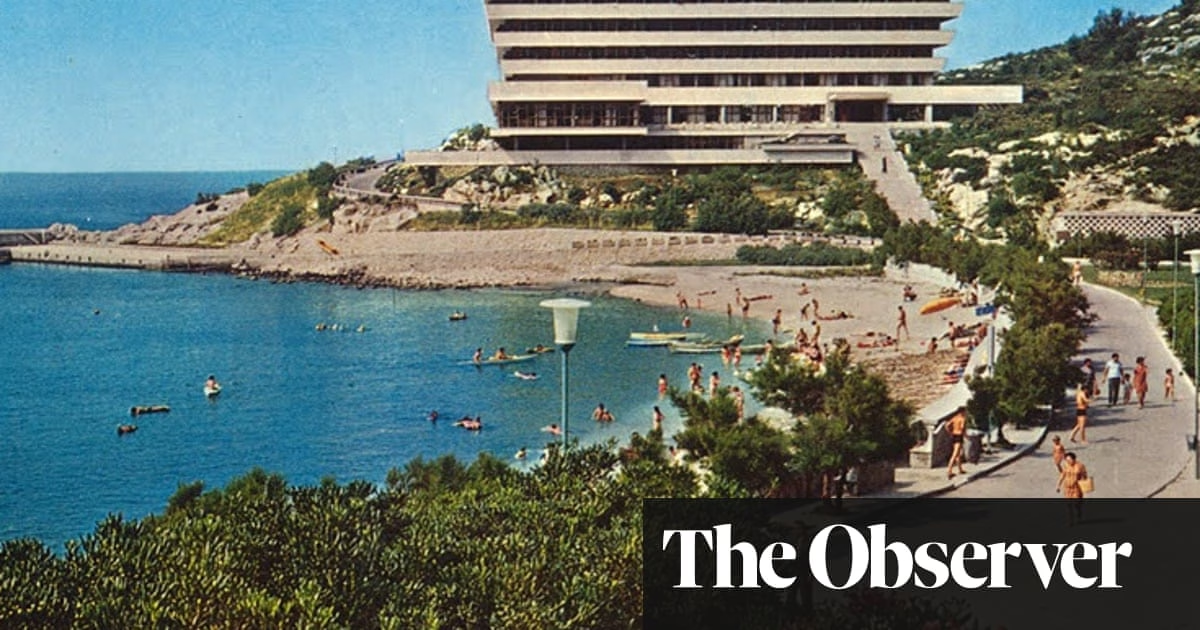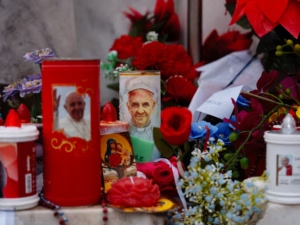With its breathtaking views over the Adriatic Sea and a crescent-shaped beach, Kupari, near Dubrovnik, was once dubbed the “Monaco” of what was known as the Yugoslav Riviera.
In the 1960s, the country’s Communist leader, Josip “Tito” Broz, ordered the construction of a vast holiday complex exclusively reserved for members of the military on this hilly stretch of the Dalmatian coast. For the top military officials, there were individual villas; for the lower ranks, a choice of six hotels; while the foot soldiers were relegated to a camping site surrounded by palm trees and lush greenery.
Tito so appreciated Kupari that he built his-and-hers holiday villas nearby overlooking the Adriatic Sea, where he and his wife, Jovanka, entertained VIP guests including Hollywood stars Richard Burton and Elizabeth Taylor.
In the 1990s, when Yugoslavia descended into war, more than a decade after Tito’s death and during the battle for Croatian independence, the site was shelled. Today, the hotels, once symbols of postwar luxury, are concrete skeletons, strewn with debris and covered with graffiti.
Now, after three decades of neglect, locals are hopeful that the site will finally be restored to its former glory as part of a €150m five-star development.
“It has been an eyesore for 30 years, so everyone is pleased it will be developed and it will offer local employment,” Marko Dabrović, the architect overseeing the plans, told the Observer during an exclusive visit to the fenced-off site. “But after 10 years of on, off, stop, start, will it, won’t it happen, they are waiting to see if it really does.”
Russian investors initially approached Zagreb-based architects 3LHD, which Dabrović runs with three partners, to draw up plans for the site 10 years ago, but Russia’s 2022 invasion of Ukraine and subsequent sanctions forced the investors to withdraw. A Singapore-based consortium working with the Four Seasons hotel group has since taken over the project.
In recent years, Kupari’s ruins have attracted off-the-beaten-track tourists who have explored its deserted rooms or camped in dusty corridors and hallways, writing blogs about the “bay of abandoned hotels”.
In 2022, the biopic Lee, in which Kate Winslet played the Second World War photographer Lee Miller, was partially shot at Kupari, made to resemble 1945 Normandy. And in March last year, popular YouTuber MrBeast released a video filmed here called I Survived 7 Days in
On a crisp February morning, the Jugo wind that gave Yugoslavia its name gusted through the windows of the Pelegrin Hotel, a trapezoid-shaped building designed by Sarajevan architect David Finci and lauded as a masterpiece when it opened in 1963. Today, it is a concrete shell: the roof open to the rain, the marble steps smashed or stolen, the furniture gone, and the Olympic-size swimming pool full of rubbish.
The sea-facing walls are covered in graffiti and pockmarked with shrapnel from artillery attacks by the Yugoslav navy in the 1991-92 siege of Dubrovnik. Campaigners sought – unsuccessfully – to have it listed as a heritage building, but Dabrović believes it is beyond repair.
“It was architecturally interesting, but even if we could rebuild it – and we cannot – it would not meet modern safety standards,” Dabrovič said.
Having grown up in Dubrovnik, he remembers the site in its heyday: “I have fond memories of playing water polo at the Kupari pool when I was 13 or 14. I would come here on a daily basis. There was a lot of military around back then. It was spooky, but it was still a working holiday resort.”
Kupari’s historic centrepiece was the Grand Hotel, a palatial-style edifice built in 1923 by a Czech businessman around the kiln of a former brick factory. After Tito came to power as leader for life of the Socialist Federal Republic of Yugoslavia in 1945, the Grand was nationalised, and new hotels were added, along with the presidential couple’s villas.
after newsletter promotion
In 1971, Tito entertained Burton and Taylor at Kupari to discuss how the actor would be playing him in the World War II film The Battle of Sutjeska.In his diaries, Burton wrote: “When he [Tito] sits down behind a table he seems most formidable. I’m slightly put out by the nervousness with which the servants serve us all.”
He added: “Both Tito and Madame Broz tell long stories which they don’t allow the interpreters to interrupt, resulting in that by the time the latter have finished one couldn’t care less what the story is about … It is as well that I’m not drinking or I might be asking some very awkward questions.”
The Pelegrin and other buildings will be demolished, but the Grand Hotel is subject to a preservation order and will be rebuilt, keeping the original façade. The new development features a 220-bed luxury hotel with terraced wings on one side of the bay and 32 individual villas set into the hillside on the other, which will be sold to private owners and rented back to the hotel.
The beach will be reinstated, and a small marina added. The site and coastline will be open to the public. Tito’s villas, while in desperate need of renovation, remain state property and will not be touched.
“The challenge has been to integrate the new buildings into the landscape. We are building only where there are existing buildings and using local materials,” Dabrovič said.
In Kupari town, locals are impatient for construction to start. Standing on the roof of the Pelegrin, Dabrovič juggled calls from officials threatening to delay building permits, but remained optimistic that the bulldozers parked on the site would soon be at work.
“As architects, it has been very frustrating. Nobody expects to be working on a project for 10 years without a single thing being constructed,” he said.
“Now everyone is just waiting for it to finally happen.”
Source: https://www.theguardian.com/world/2025/mar/01/communist-tito-yugoslav-adriatic-luxury-beach-resort








